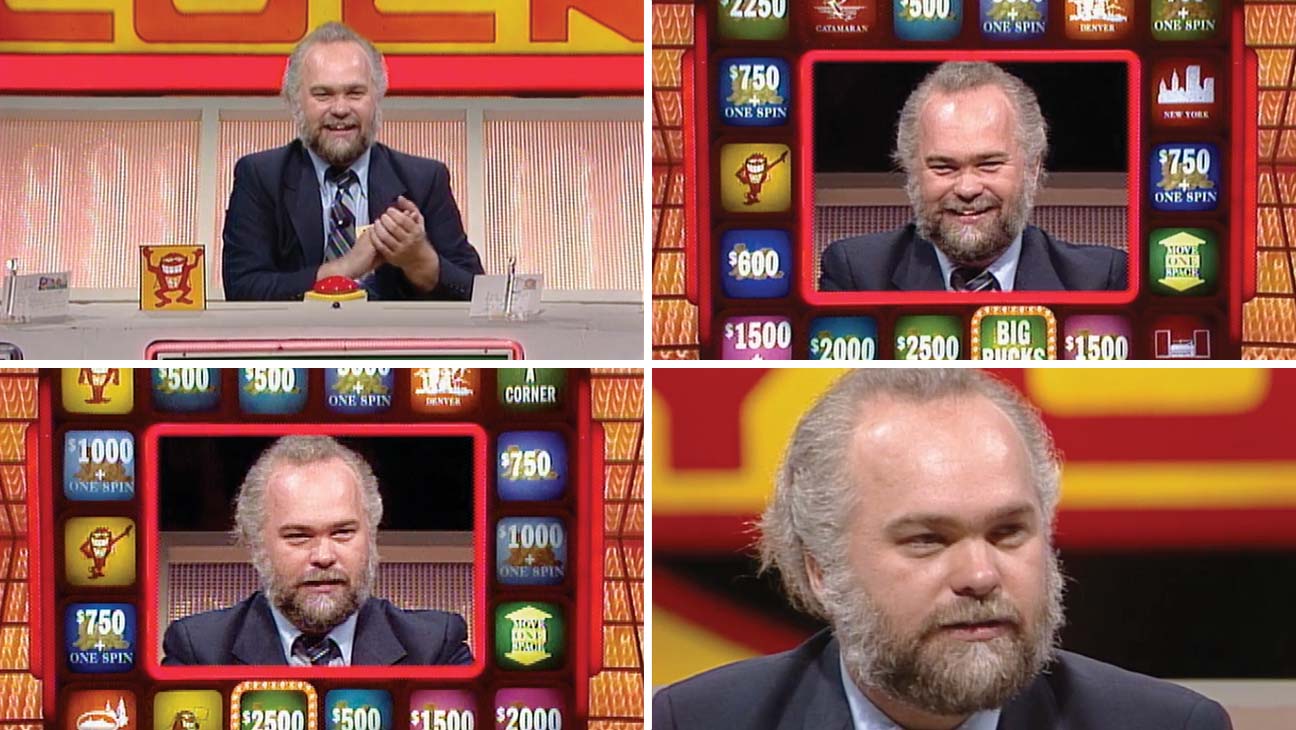An Ice Cream Man Hacked ‘Press Your Luck’ in 1984
In an episode of the CBS morning game show, which is relaunching in primetime on ABC with Elizabeth Banks as host, a 35-year-old Ohio man set a record for winnings—$283,000 in today’s dollars plus trips to the Bahamas, Kauai and a sailboat—after cracking the code to avoid the dreaded Whammy: "He beat the system."
In late 1983, when the CBS morning game show Press Your Luck first came on the air, a 35-year-old Mister Softee ice-cream truck driver from Ohio named Michael Larson saw the chance of a lifetime. He’d spent months watching game shows looking for one he could crack. When he noticed a major flaw in the way Luck's game board operated, he boarded a bus to L.A.
Larson arrived in May 1984 so broke, when he appeared on the show, he was wearing a thrift store shirt he’d bought down the block from CBS’ Television City. The game — set to relaunch June 12 in primetime on ABC with Elizabeth Banks serving as host — had two parts. First, host Peter Tomarken asked contestants questions. A correct answer earned a spin on an 18-space board that hid cash and prizes. The idea was to stop the randomly bouncing cursor on a lucrative space and not on a “Whammy,” which would erase the player’s accumulated winnings. Larson’s insight was that the cursor was not actually random, that there were only five distinct patterns. So he memorized them.
"Pilots are test vehicles, and you can cut corners," says Michael Brockman, then head of CBS daytime programming. "On this show, what was expensive to create was the light pattern on the board. No one wanted to spend that much money on the pilot. And then the pattern wasn’t improved enough when the show went into production." (Brockman’s game show experience dates to 1977 when David Letterman, then 30, hosted a pilot for a show called The Riddlers. "David had talent," he says. "The show just didn’t work.")
Larson took Press Your Luck for $110,237 ($283,000 in today’s dollars) plus trips to the Bahamas, Kauai and a sailboat. It was the most anyone had ever won on a single episode of a game show at the time. The odds of hitting a Whammy were one in six, the same odds as rolling a seven at a craps table. Larson had made 45 spins without hitting one. It was a statistical impossibility. Because of this, CBS didn’t want to give him the money; the network’s Standards and Practices department believed he had cheated. "I said, ‘How did he cheat? He beat the system,'" recalls Brockman. "CBS finally agreed to pay him what he’d won."
Soon after Larson's triumph, the board was reprogrammed with 32 patterns, ensuring his method wouldn’t work again. The show went off the air in 1986.
When Tomarken asked Larson on-air what he was going to do with his winnings, Larson said, "Invest in houses." And while he did invest some of the money in Ohio real estate, he also lost $50,000 in a home burglary. Larson had the cash on hand because he was trying to beat a radio game that offered a prize if you matched announced numbers with those on a $1 bill.
He eventually took a job as an assistant manager at Walmart and then sold shares in what the Security and Exchange Commission called "a fraudulent multi-level marketing scheme" run by a company called Pleasure Time, Inc. that involved a non-existent American Indian lottery and raised $1.8 million from 14,000 investors. Larson had become one of the pioneers of internet scams.
The SEC filed charges against the operation in 1995. With the SEC, the IRS and the FBI looking for him, Larson fled Ohio for Apopka, Florida. He died there in 1999 at age 49 from throat cancer before he could be found and prosecuted.
A version of this story first appeared in the June 12 issue of The Hollywood Reporter magazine. To receive the magazine, click here to subscribe.








Gloss